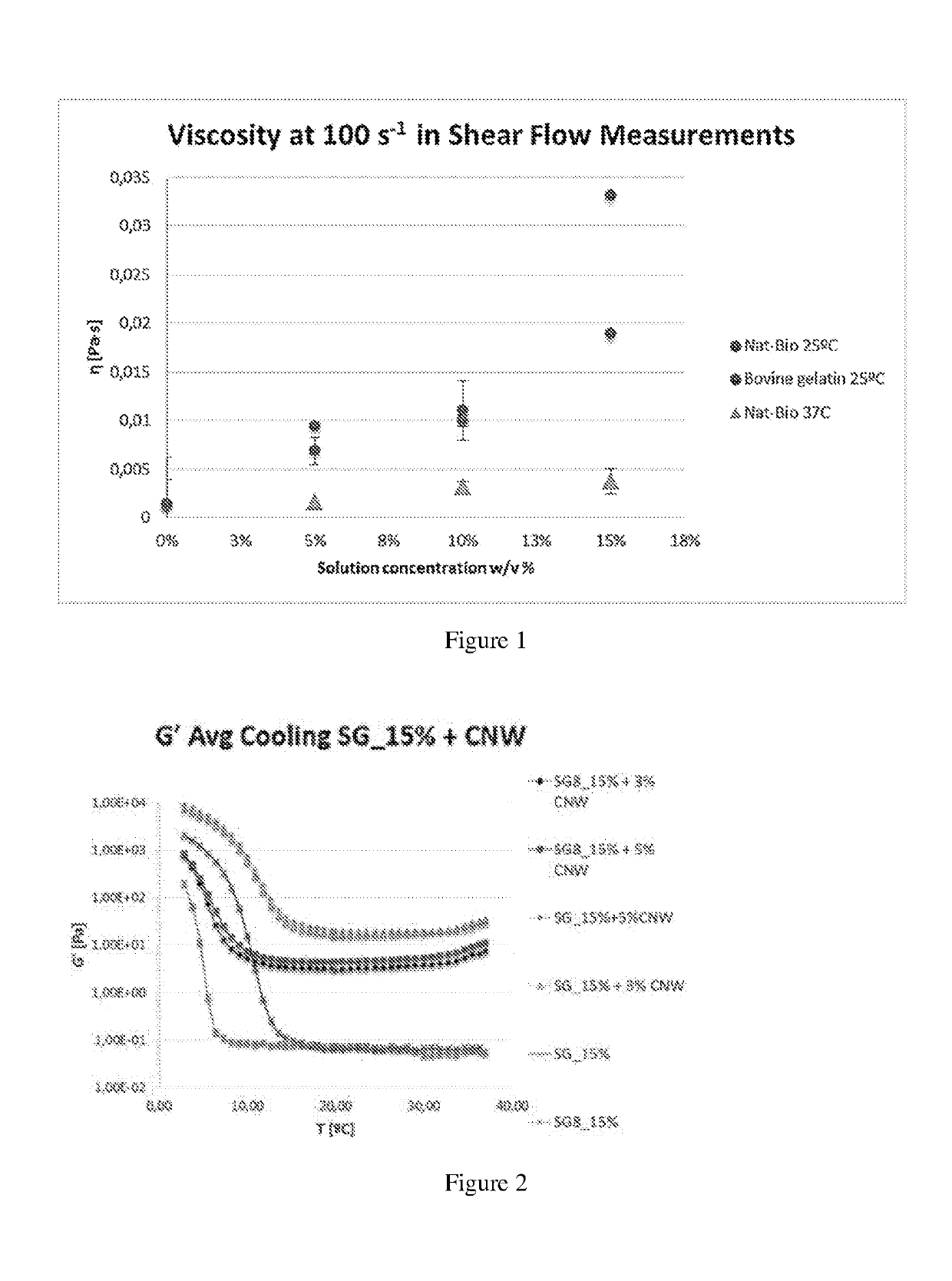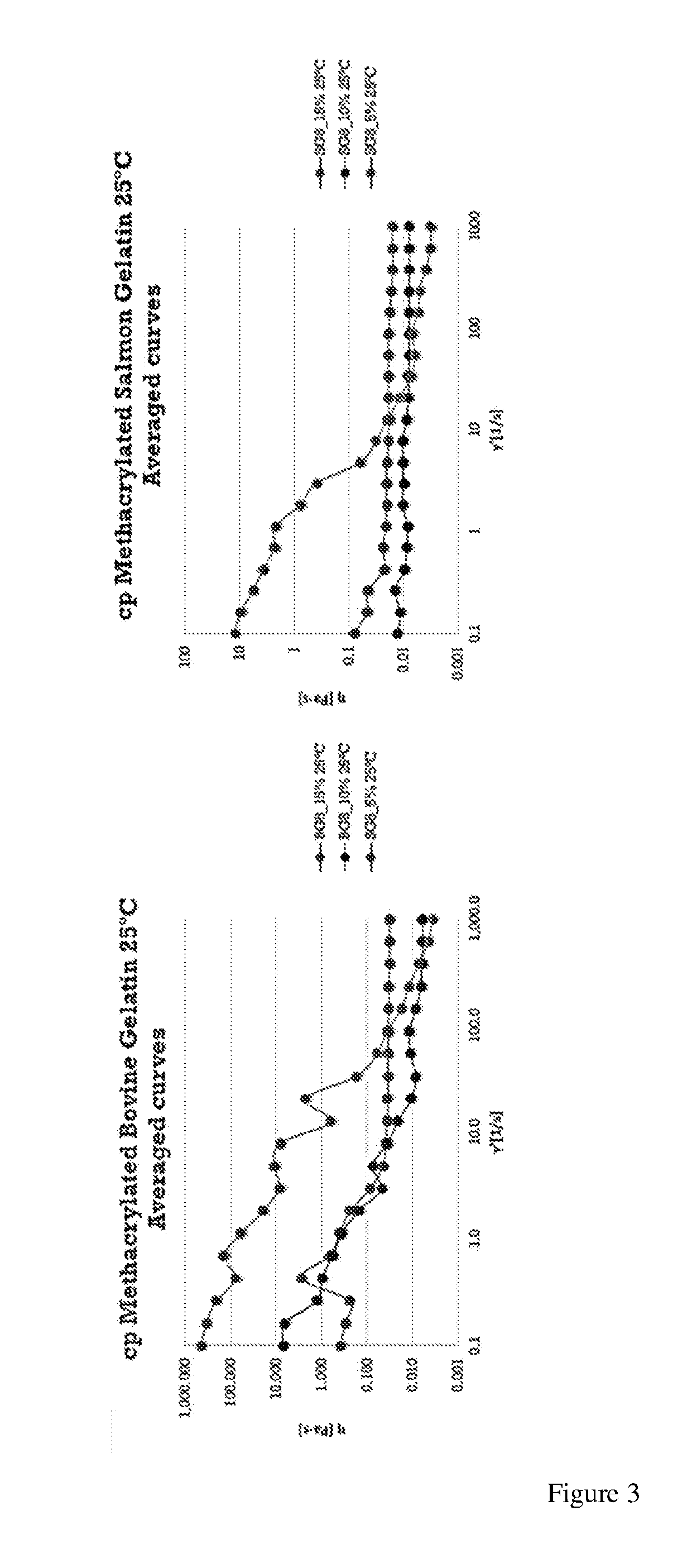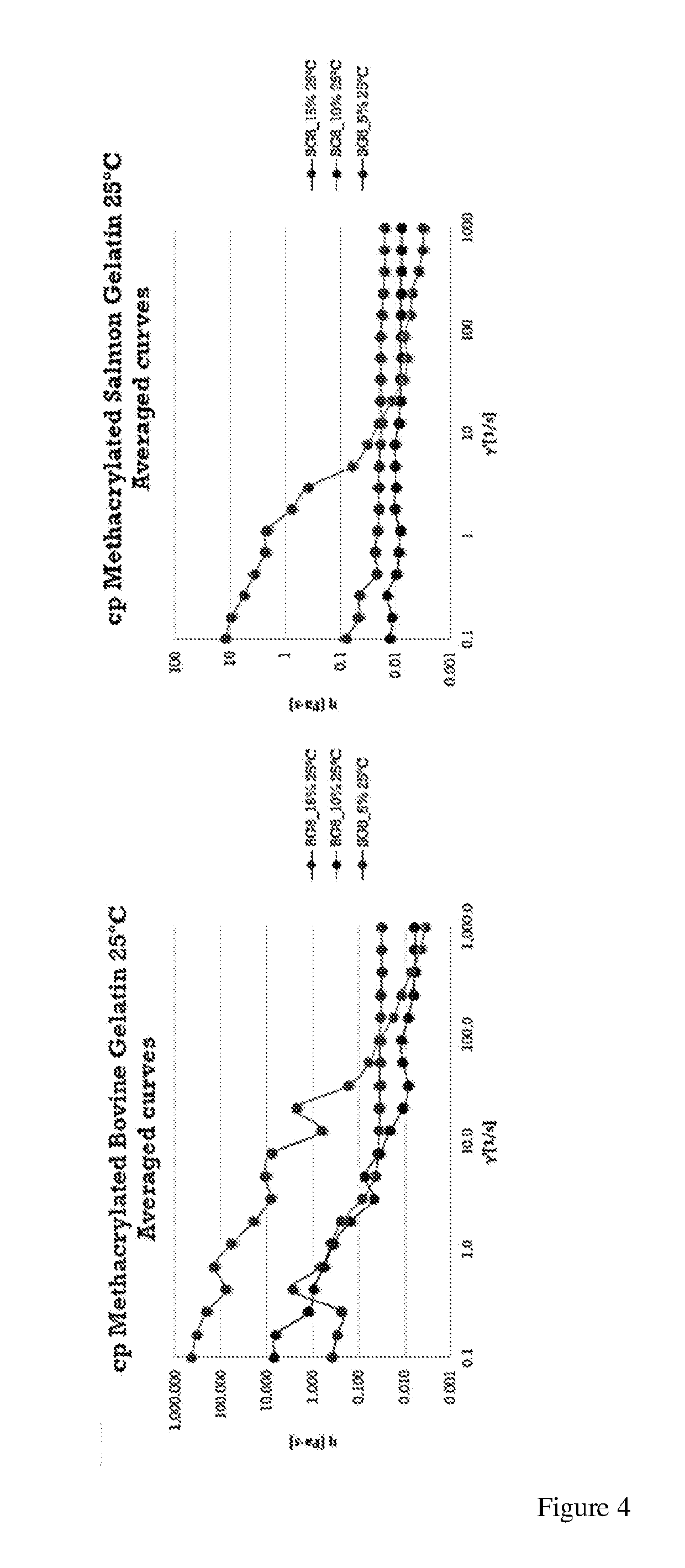Gelatin polymer derived from natural sources of cold-adapted marine species and uses thereof
- Summary
- Abstract
- Description
- Claims
- Application Information
AI Technical Summary
Benefits of technology
Problems solved by technology
Method used
Image
Examples
example 1
Manufacture of a Solution of Methacryloyl Salmon Gelatin
[0194]Salmon Gelatin Extraction:[0195]1. Remove all the remaining meat and scales from the salmon skin.[0196]2. Cut the skin in small cubes squares (3-5 cm / side)[0197]3. Add 6 mL of NaOH 0.1M per gr of skin, maintain constant agitation (900 0 rpm) at 10° C. for 1 h.→6 mL / g*500 g=3 L (measured pH=13)[0198]4. Remove the solution and wash the skins with dH2O by filtering and soaking.[0199]5. Add 6 mL of NaOH 0.1M per gr of skin, maintain constant agitation at 10° C. for 1 h.→3 L (measured pH=13)[0200]6. Remove the solution and wash the skins with dH2O by by filtering, rinsing and soaking the filtered skin with dH2O.[0201]CAUTION: a too extensive washing at this step may influence the pH of the acidic solution in step 7 that may lead to a higher acidity that induce partial extraction of gelatin that needs to be avoided at this stage.[0202]7. Add then 6 mL of 0.05M CH3COOH per gr of skin, maintain constant agitation at 10° C. for 1 ...
example 2
Manufacture of a Solution of Methacryloyl Bovine Gelatin
[0213]Similarly to example 1, methacryloyl bovine gelatin was synthesized after mixing methacrylic anhydride, and reacting with amino groups, mainly lysine, from a gelatin solution as previously described (Nichol et al. 2010; Van Den Bulcke et al. 2000). Briefly, bovine gelatin (Bloom 220, Rousselot, Netherlands) was dissolved to a final concentration of 10% (w / v) in PBS 1× (pH 7.4) at 60° C. After fully dissolved, while still stirring, methacrylic anhydride (276685, Sigma, USA) was added slowly to a final concentration of 8% (v / v). Different levels of methacryloyl functionalization require different concentrations of methacrylic anhydride. After 3 hrs of reaction, 5× dilution in PBS 1× was performed and the reacted gelatin dialyzed against deionized water at 40° C. for 1 week. Daily replacements of fresh deionized water were done to remove all unreacted methacrylic anhydride during dyalisis. Finally, the dialyzed mixture was f...
example 3
Manufacture of a Solution of Non-Methacryloyl Salmon Gelatin
[0214]Salmon gelatin is extracted as explain in example 1 and non-methacryloyl salmon gelatin is usually prepared by dissolving the obtained gelatin to a final concentration of 10% (w / v) gelatin in PBS 1× (pH 7.4) at 60° C. Solutions having different concentrations of gelatin require the dissolution of different amounts of grounded gelatin in PBS 1×.
PUM
| Property | Measurement | Unit |
|---|---|---|
| Fraction | aaaaa | aaaaa |
| Fraction | aaaaa | aaaaa |
| Fraction | aaaaa | aaaaa |
Abstract
Description
Claims
Application Information
 Login to View More
Login to View More - R&D
- Intellectual Property
- Life Sciences
- Materials
- Tech Scout
- Unparalleled Data Quality
- Higher Quality Content
- 60% Fewer Hallucinations
Browse by: Latest US Patents, China's latest patents, Technical Efficacy Thesaurus, Application Domain, Technology Topic, Popular Technical Reports.
© 2025 PatSnap. All rights reserved.Legal|Privacy policy|Modern Slavery Act Transparency Statement|Sitemap|About US| Contact US: help@patsnap.com



